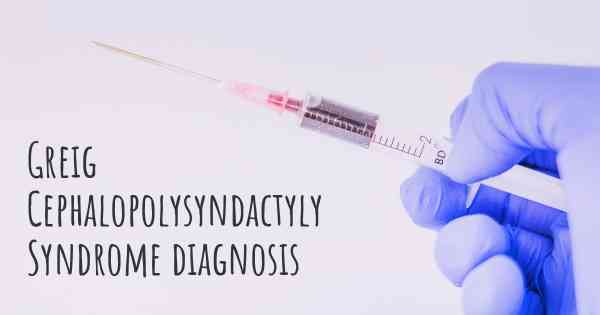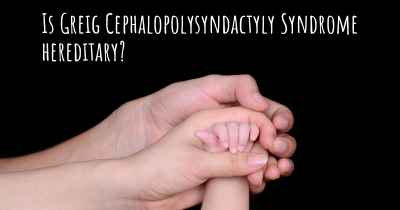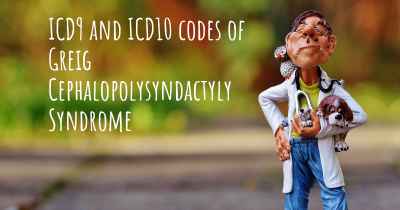How is Greig Cephalopolysyndactyly Syndrome diagnosed?
See how Greig Cephalopolysyndactyly Syndrome is diagnosed. Which specialists are essential to meet, what tests are needed and other useful information for the diagnosis of Greig Cephalopolysyndactyly Syndrome

Greig Cephalopolysyndactyly Syndrome (GCPS) is a rare genetic disorder characterized by a combination of craniofacial, limb, and digit abnormalities. Diagnosing GCPS involves a comprehensive evaluation of the individual's physical features, medical history, and genetic testing.
Physical examination: A thorough physical examination is conducted to assess the presence of characteristic features associated with GCPS. These may include a prominent forehead, widely spaced eyes (hypertelorism), a broad nasal bridge, a cleft lip or palate, and extra fingers or toes (polydactyly or syndactyly).
Medical history: Gathering a detailed medical history is crucial in diagnosing GCPS. The healthcare provider will inquire about any family history of GCPS or similar genetic conditions, as well as the presence of any other associated symptoms or developmental delays.
Genetic testing: Genetic testing plays a vital role in confirming the diagnosis of GCPS. The two primary methods used are chromosomal analysis and molecular genetic testing.
Chromosomal analysis: This test examines the structure and number of chromosomes in a person's cells. It can identify large-scale chromosomal abnormalities that may be responsible for GCPS. A blood sample is typically collected for this analysis.
Molecular genetic testing: This type of testing focuses on specific genes associated with GCPS. It can detect mutations or alterations in the GLI3 gene, which is responsible for the development of GCPS. Molecular genetic testing can be performed using various techniques, such as DNA sequencing or targeted mutation analysis.
Additional diagnostic procedures: In some cases, additional tests may be recommended to evaluate specific organ systems or to rule out other conditions that may have overlapping features with GCPS. These may include imaging studies (such as X-rays or CT scans) to assess skeletal abnormalities or echocardiograms to evaluate heart function.
It is important to consult with a healthcare professional or a geneticist for an accurate diagnosis of GCPS. They will consider the individual's clinical presentation, medical history, and the results of genetic testing to make a definitive diagnosis.
Posted Oct 18, 2018 by Alexzander 3000








